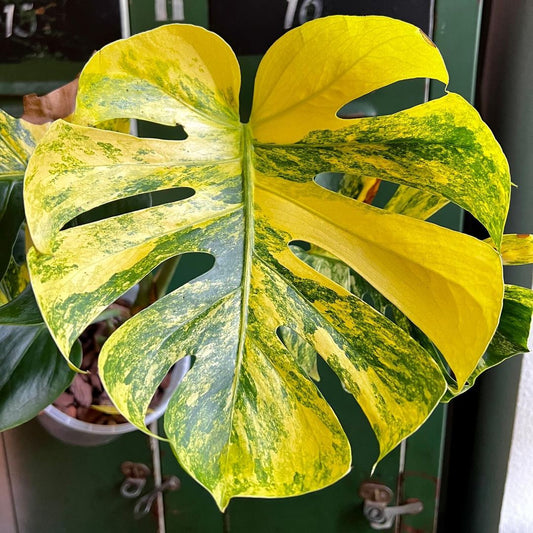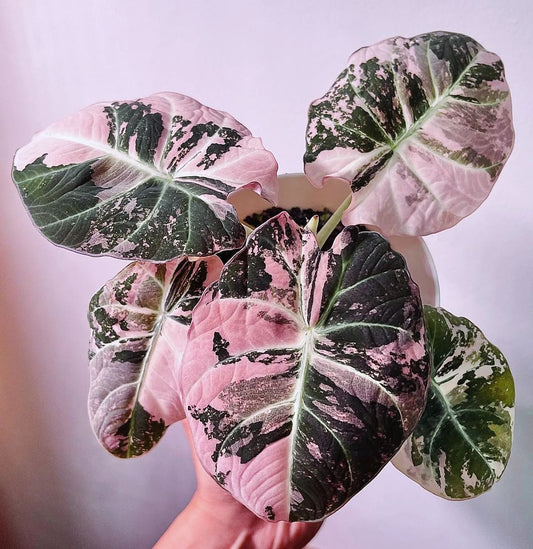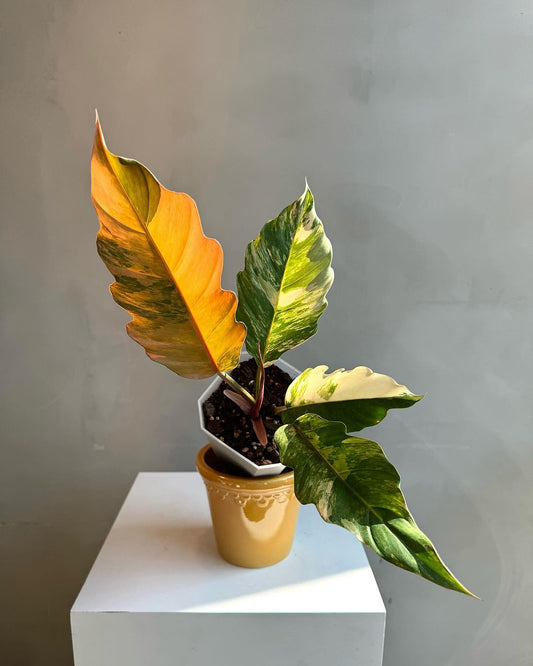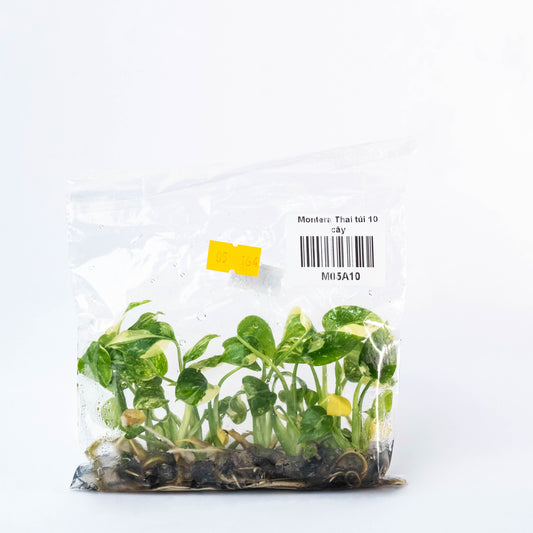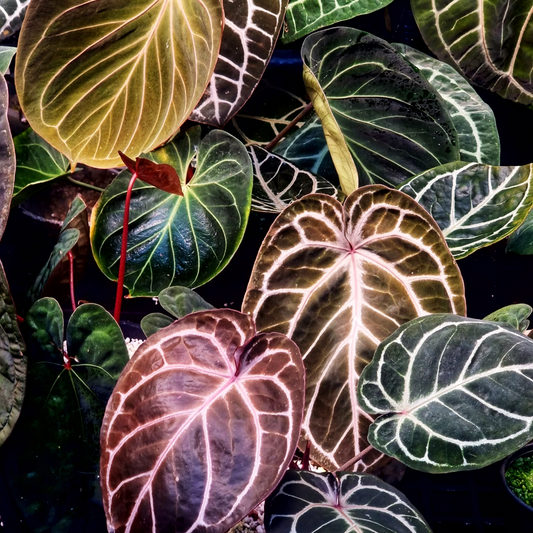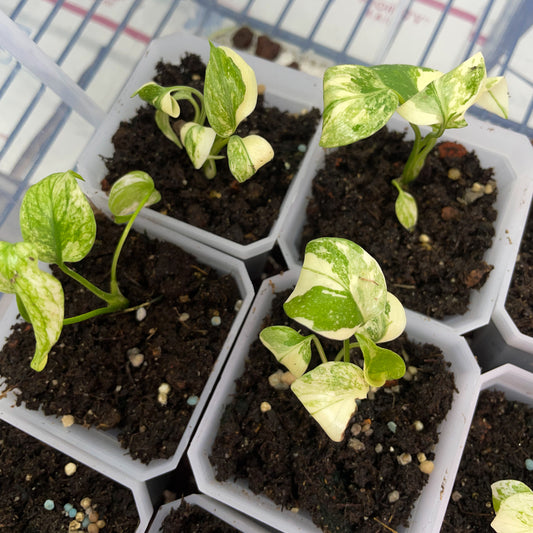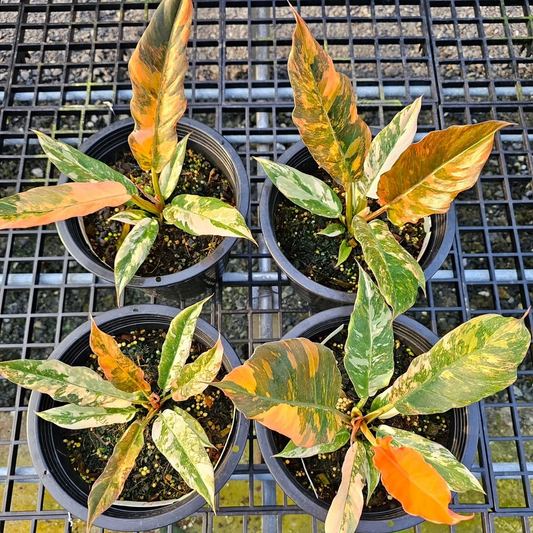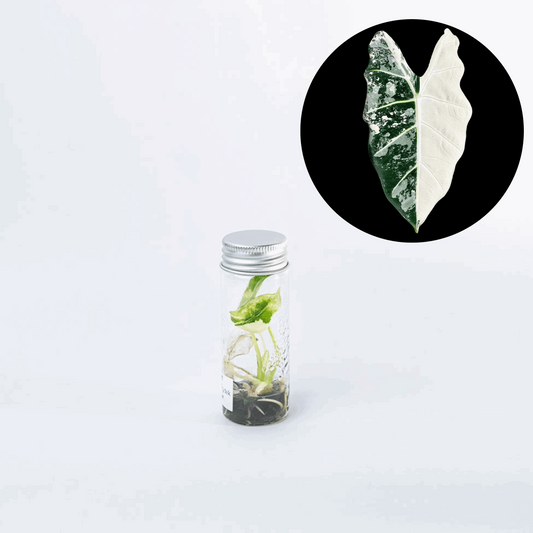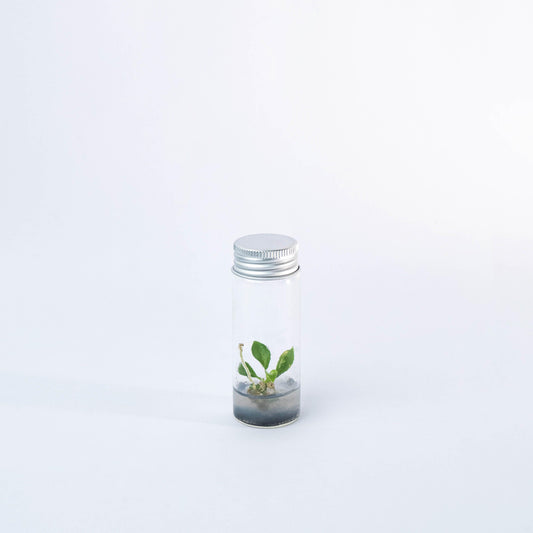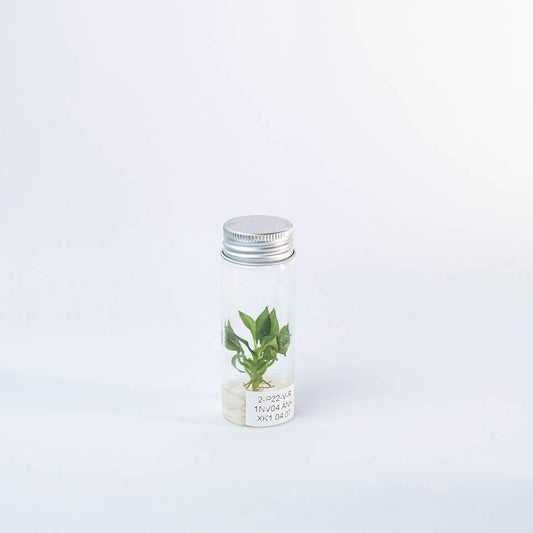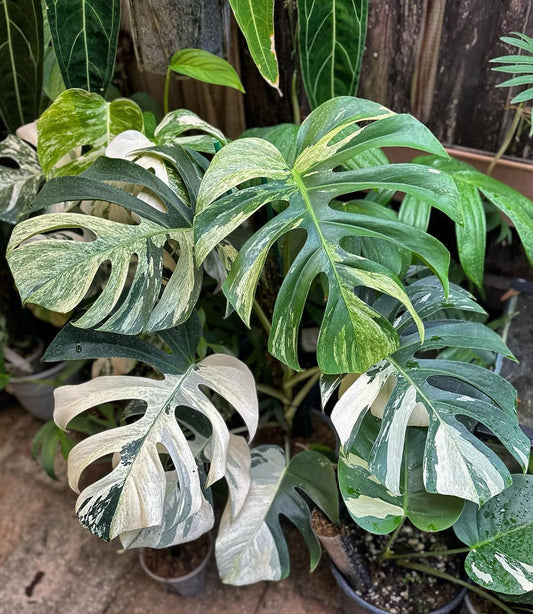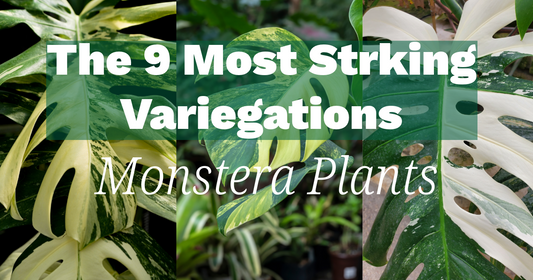Exotic Indoor Plants Delivered Direct to Your Door
Explore our collection of exotic plants such as Monstera, Philodendron, Alocasia, Anthurium, and many more, with the mission to bring the jungle to your home. A household plant, or houseplant, is any plant grown indoors for decoration or air purification, providing benefits such as improved indoor air quality and a touch of nature to indoor spaces.
- Monstera Plant: The Monstera plant, also known as the Swiss cheese plant, boasts large, glossy leaves with unique perforations, lending it a distinctive appearance. Originating from the rainforests of Central and South America, this tropical houseplant thrives in indoor environments with indirect sunlight and regular watering.
- Alocasia Plant: The Alocasia plant, commonly known as elephant ear or African mask plant, is a striking tropical species prized for its large, dramatic foliage and unique leaf shapes. Originating from Southeast Asia and the Pacific Islands, it thrives in warm, humid climates and is often grown as a houseplant in cooler regions.
- Philodendron Plant: The Philodendron plant, characterized by its lush green leaves and vining growth habit, is a beloved staple of indoor gardening. Originating from the tropical regions of South America, it thrives in low to moderate light conditions and requires minimal care, making it an ideal choice for beginner plant enthusiasts.
- Anthurium Plant: The Anthurium plant captivates with its exquisite beauty, boasting glossy, heart-shaped leaves that add a touch of elegance to any space. Each leaf showcases intricate veining and a vibrant green hue, creating a stunning visual display.
- Tissue Culture Plant: Tissue culture plants, prized for their high variegation and uniformity, are cultivated using advanced laboratory techniques, resulting in consistent traits. While initially more expensive due to the specialized process, they offer unique aesthetics and disease-free propagation.
- Exotic Plant: Venture into the world of the most exotic and rare indoor plants on the market. With high variegation, affordable prices, and uniqueness.
Indulge your senses with our captivating collection of exotic indoor plants. Each plant is not merely a decorative piece but a living masterpiece, meticulously cultivated to bring a touch of nature's splendor into your home. Immerse yourself in the lush beauty of our indoor plants and let their unique charms elevate your living space to new heights of tranquility and sophistication..
Best-Selling Indoor Plants: Pick your Favorite One
Discover the perfect green companion for your space with our selection of best-selling indoor plants. From vibrant ferns to elegant succulents, pick your favorite and bring natural beauty into your home.
-
Variegated Monstera White Monster Tissue Culture Plant
Regular price $69.99 USDRegular priceUnit price per -
Variegated Monstera Yellow Marilyn Tissue Culture Plant
Regular price $89.99 USDRegular priceUnit price per -
Monstera Burle Marx Flame Tissue Culture Plant
Regular price $35.00 USDRegular priceUnit price per -
Premium Variegated Monstera Thai Constellation Tissue Culture Plant
Regular price $16.99 USDRegular priceUnit price per -
Variegated Monstera Albo Tissue Culture Plant
Regular price $34.00 USDRegular priceUnit price per -
Variegated Philodendron White Wizard Tissue Culture Plant
Regular price $9.99 USDRegular priceUnit price per -
Variegated Philodendron Red Congo Tissue Culture Plant
Regular price $89.99 USDRegular priceUnit price per -
Variegated Alocasia Amazonica Polly Tissue Culture Plant
Regular price From $24.99 USDRegular priceUnit price per -
Variegated Monstera Albo Mature Plant (3 -4 Leaves) | Grower Pick
Regular price From $150.00 USDRegular priceUnit price per -
Well-Rooted Variegated Monstera Yellow Marilyn Plant | Grower Pick
Regular price $149.99 USDRegular priceUnit price per -
Well-Rooted Acclimated Variegated Monstera White Monster Plant | Grower Pick
Regular price $109.99 USDRegular priceUnit price per -
Variegated Philodendron Pink Princess Mature Plant 3.5 inches
Regular price $70.00 USDRegular priceUnit price per -
Well-Rooted Variegated Monstera Creme Brulee Plant | Grower Pick
Regular price $99.99 USDRegular priceUnit price per -
Variegated Philodendron Pink Princess Tissue Culture Plant
Regular price From $9.99 USDRegular priceUnit price per -
Variegated Philodendron Caramel Mature Plant | Grower Pick
Regular price $299.00 USDRegular priceUnit price per
Discover the Words of Tissue Culture Plants
Tissue culture plants are captivating indoor companions that combine uniqueness, quality, and affordability. These meticulously propagated specimens thrive in controlled laboratory conditions, resulting in healthy, disease-free plants with consistent traits. Variegation—striking patterns of different colors on leaves—is a hallmark of many tissue culture varieties. These plants offer budget-friendly alternatives to mature specimens, making rare and exotic species accessible to all. Whether it’s a Philodendron Wend-Imbe Variegata or a Syngonium “Strawberry Ice,” tissue culture plants bring living art to your home. Remember to acclimate them gently to your environment, and watch them flourish!
-
Variegated Philodendron Red Congo Tissue Culture Plant
Regular price $89.99 USDRegular priceUnit price per -
Variegated Alocasia Odora Batik Tissue Culture Plant
Regular price From $25.99 USDRegular priceUnit price per -
Premium Variegated Monstera Thai Constellation Tissue Culture Plant
Regular price $16.99 USDRegular priceUnit price per -
Variegated Monstera White Monster Tissue Culture Plant
Regular price $69.99 USDRegular priceUnit price per -
Variegated Philodendron Pink Princess Tissue Culture Plant
Regular price From $9.99 USDRegular priceUnit price per -
Variegated Alocasia Frydek Tissue Culture Plant
Regular price From $39.99 USDRegular priceUnit price per -
Variegated Monstera Creme Brulee Tissue Culture Plant
Regular price $89.99 USDRegular priceUnit price per -
Variegated Monstera Yellow Marilyn Tissue Culture Plant
Regular price $89.99 USDRegular priceUnit price per -
Variegated Alocasia Amazonica Polly Tissue Culture Plant
Regular price From $24.99 USDRegular priceUnit price per -
Variegated Alocasia Gageana Aurea Tissue Culture Plant
Regular price From $12.99 USDRegular priceUnit price per -
Variegated Philodendron Painted Lady Tissue Culture Plant
Regular price $12.99 USDRegular priceUnit price per -
Variegated Philodendron Jungle Fever Tissue Culture Plant
Regular price $14.99 USDRegular priceUnit price per -
Variegated Alocasia Longiloba Tissue Culture Plant
Regular price From $29.99 USDRegular priceUnit price per -
Philodendron Billietiae Tissue Culture Plant
Regular price From $3.99 USDRegular priceUnit price per -
Philodendron Joepii Tissue Culture Plant
Regular price $9.99 USDRegular priceUnit price per -
Philodendron Mamei Tissue Culture Plant
Regular price $2.99 USDRegular priceUnit price per
Why Choose From Tropicflow
Choosing indoor plants from Tropicflow guarantees confidence in both quality and quantity
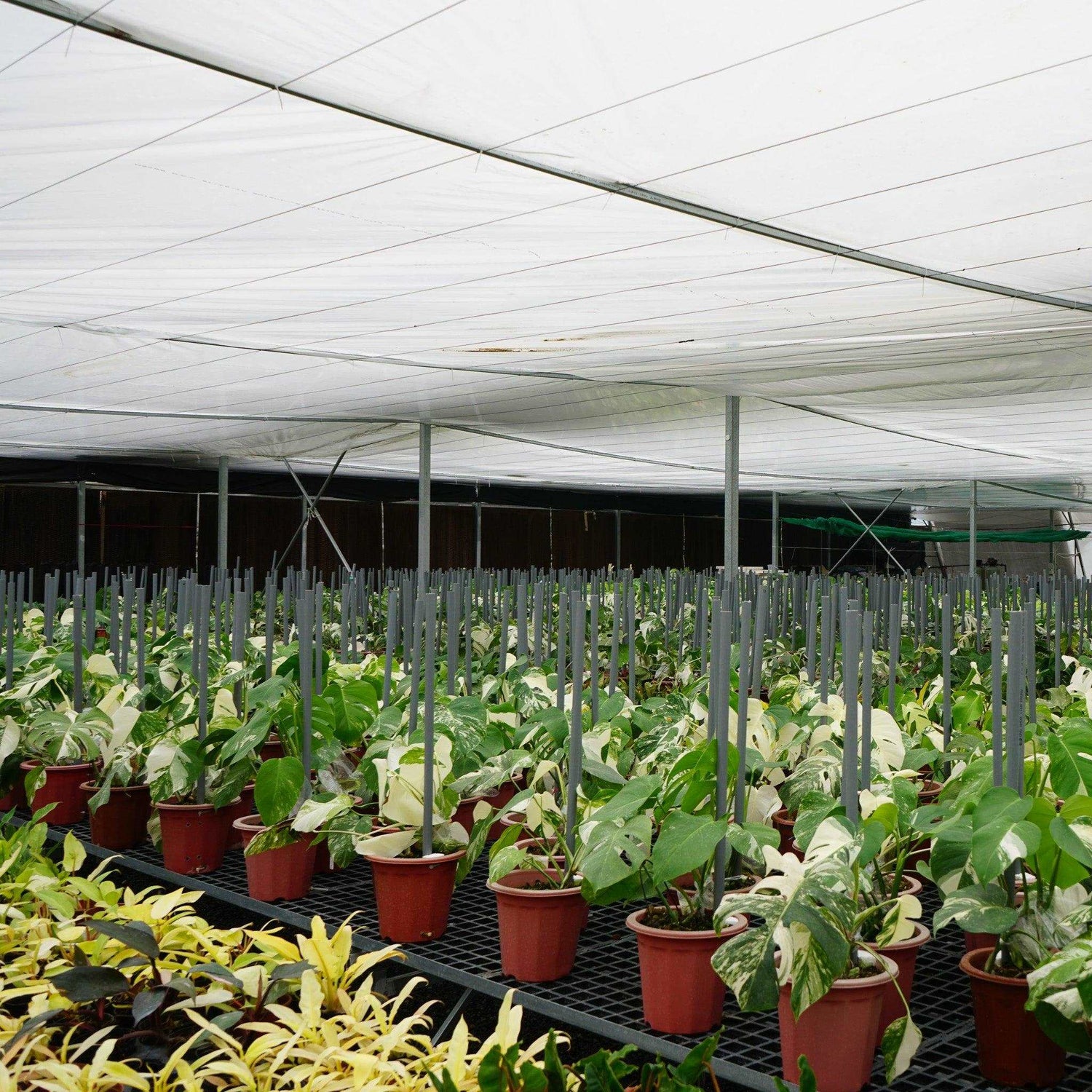
Quality & Variety
Our plants are carefully selected and nurtured to ensure they arrive healthy and vibrant. We offer a wide range of indoor plants, including rare and exotic species, to suit every taste and space.
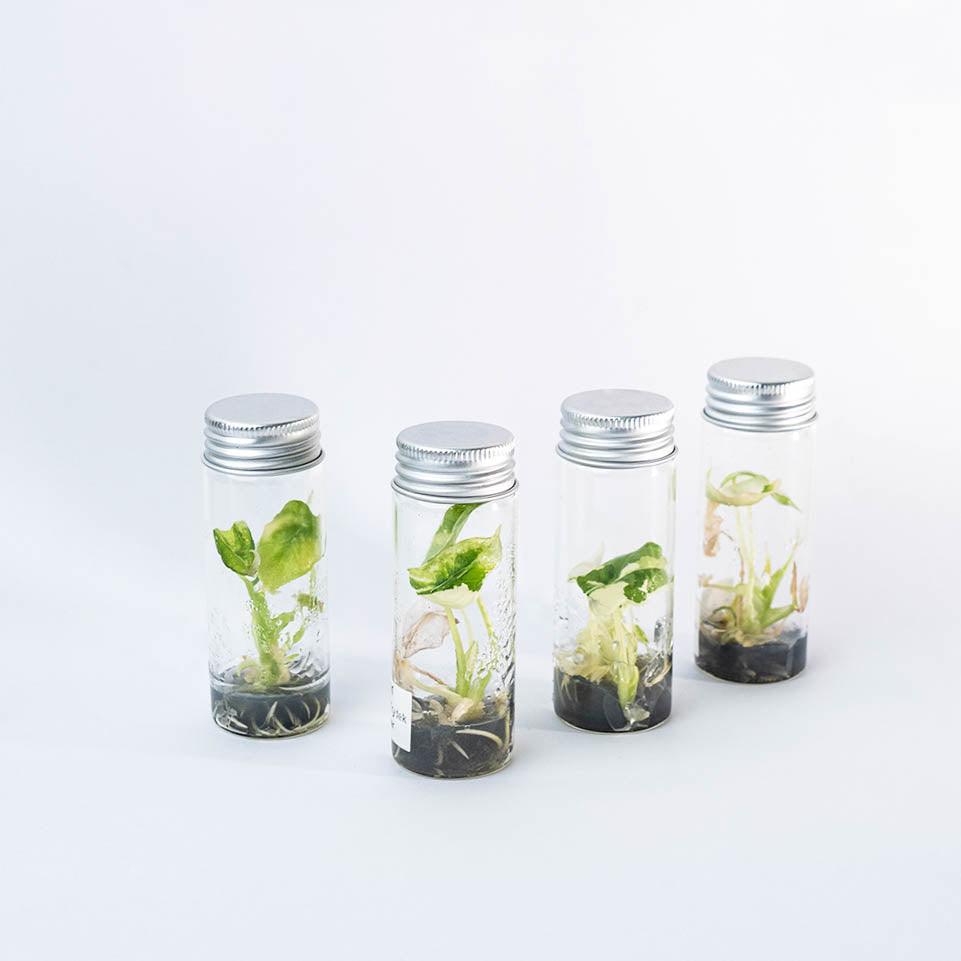
Plant Research and Development
We're not just sellers, we're also dedicated to Plant R&D, continually introducing more beautiful indoor plants to the market.
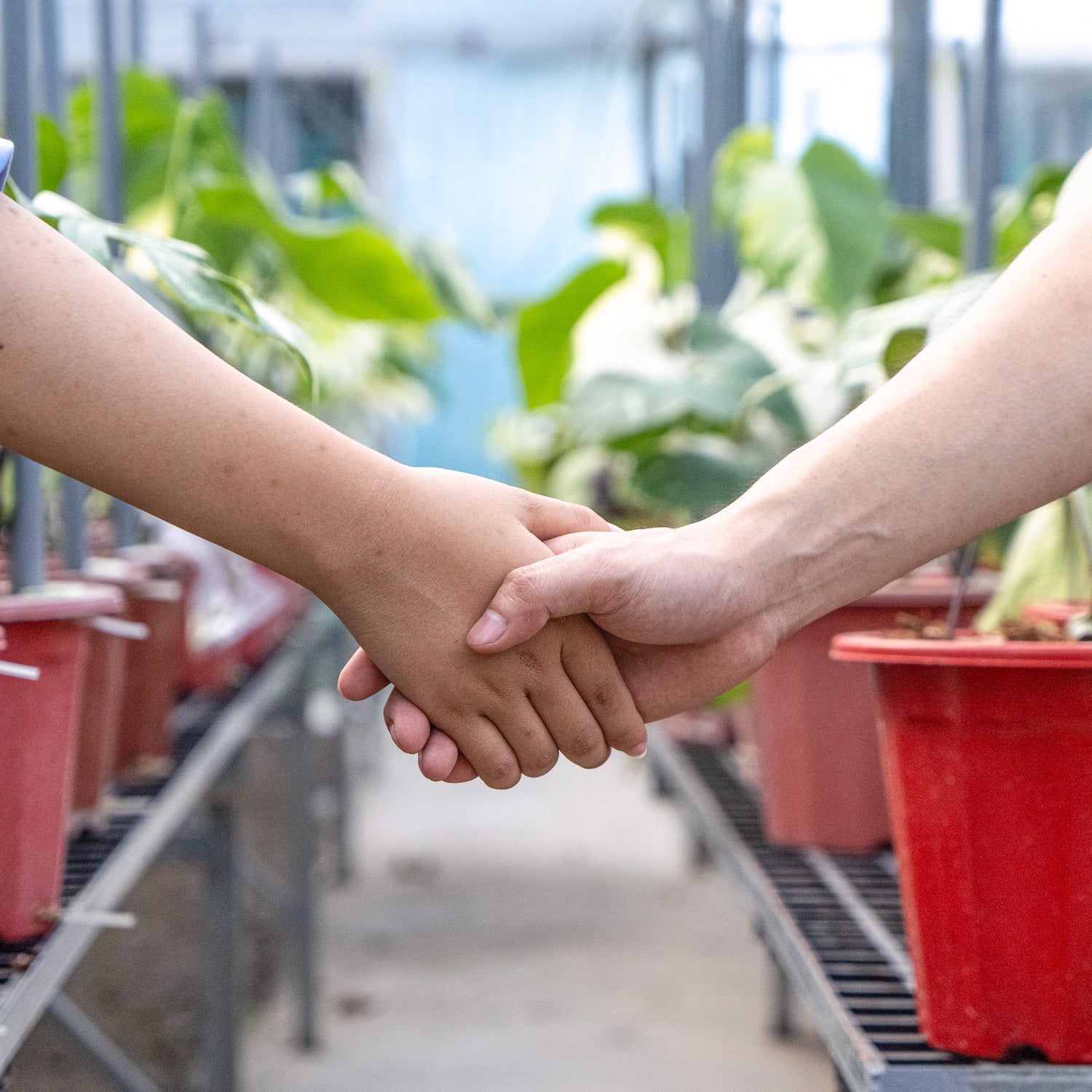
Customer Service
Beyond offering high-quality plants, ensuring customer satisfaction is our primary goal in business. With a 100% live arrival guarantee, we provide protection and peace of mind for our customers.
Customer Review
FAQ
FAQs Indoor Plants
How often to water indoor plant?
Generally, it's advisable to water when the top inch of soil feels dry to the touch, typically every 1-2 weeks. Adjust watering frequency based on individual plant needs and environmental factors such as humidity levels and indoor temperature.
How to get rid of bugs on indoor plant?
To rid indoor plants of bugs, isolate the affected plant and wipe the leaves with a damp cloth. Use insecticidal soap or neem oil spray for persistent infestations, and ensure good airflow to deter pests. Regular inspection and preventive measures like keeping soil clean can help prevent future issues.
How to get rid of gnats on indoor plants
To remove gnats from indoor plants, let the soil dry between waterings, use yellow sticky traps for adult gnats, and apply diluted hydrogen peroxide or insecticidal soap to kill larvae. Ensure good drainage and avoid overwatering to prevent recurrence.
How to grow indoor plant?
To grow indoor plants successfully, start by selecting plants suited to your environment and light conditions. Use well-draining soil and pots with drainage holes to prevent waterlogging. Water plants when the top inch of soil is dry, and provide them with adequate sunlight or artificial light. Regularly remove dead or yellowing leaves, and fertilize plants during their active growing season. Finally, monitor for pests and diseases, and adjust care as needed to ensure healthy growth.
What should I do next when I received indoor plant from Tropicflow?
When you receive an indoor plant from Tropicflow, carefully unpack it and inspect for any damage during transit. Place the plant in an area with appropriate light conditions according to its specific needs. Water the plant if the soil is dry, ensuring not to overwater. Familiarize yourself with the care instructions provided by Tropicflow for that particular plant species, and continue to monitor and provide regular care accordingly.
Where should I place indoor plant in my house?
When deciding where to place indoor plants in your house, consider their specific light requirements. Plants that require bright, indirect sunlight should be placed near windows with filtered sunlight. Plants that thrive in low light can be placed in areas away from direct sunlight, such as corners or shelves.
What is the best soil for indoor plant?
The best soil for indoor plants is typically a well-draining potting mix specifically formulated for indoor use. Look for a blend that includes ingredients like peat moss, perlite, and vermiculite, which help retain moisture while promoting good drainage and aeration.
Are monstera plant toxic to cat and dog?
Yes, Monstera plants are considered toxic to cats and dogs if ingested. The leaves and stems contain insoluble calcium oxalate crystals, which can cause irritation and discomfort if consumed by cats. Symptoms of ingestion may include drooling, vomiting, difficulty swallowing, and oral irritation. It's important to keep Monstera plants out of reach of cats and other pets to prevent accidental ingestion.
How to care for a Monstera plant?
Caring for a Monstera plant involves providing it with the right growing conditions and regular maintenance. Here are some care tips:
- Light: Place your Monstera plant in bright, indirect sunlight. Avoid direct sunlight, as it can scorch the leaves.
- Watering: Allow the top inch or two of soil to dry out between waterings. Water thoroughly, but ensure excess water can drain away to prevent root rot.
- Humidity: Monstera plants prefer high humidity, so consider using a humidifier or misting the leaves regularly to mimic their natural tropical environment.
- Temperature: Keep your Monstera plant in a warm environment, ideally between 65-85°F (18-30°C). Avoid exposing it to cold drafts or temperatures below 50°F (10°C).
- Soil: Use a well-draining potting mix with plenty of organic matter, such as peat moss or coco coir.
- Fertilizing: Feed your Monstera plant with a balanced liquid fertilizer diluted to half strength every 4-6 weeks during the growing season (spring and summer).
- Pruning: Trim any yellow or brown leaves, as well as leggy stems, to encourage new growth and maintain a tidy appearance.
- Support: Provide a moss pole or trellis for climbing varieties of Monstera to support their growth and encourage the development of larger leaves.
By following these care tips, you can help your Monstera plant thrive and grow into a beautiful, lush specimen.
How to propagate a Monstera plant?
Propagation of a Monstera plant can be done through several methods, including stem cuttings and air layering. Here's how to propagate a Monstera plant using stem cuttings:
- Select a healthy stem: Choose a stem with at least one node (where leaves emerge) and one or two aerial roots, if possible.
- Cut the stem: Use clean, sharp scissors or pruning shears to cut the stem just below a node. Make sure the cutting is at least 6 inches (15 cm) long.
- Prepare the cutting: Remove any leaves from the bottom portion of the cutting, leaving at least one or two leaves at the top.
- Optional: Dip the cut end of the stem in rooting hormone to encourage root growth, although this step is not necessary for Monstera propagation.
- Place the cutting in water or soil: You can propagate the cutting in water or directly in potting soil. If using water, place the cut end of the stem in a container filled with water, making sure the node and aerial roots are submerged. Change the water every few days to prevent stagnation and rot. If using soil, insert the cutting into moist potting mix, ensuring the node is buried and the aerial roots are covered.
- Provide appropriate conditions: Place the cutting in a warm, bright location with indirect sunlight. Keep the soil or water consistently moist, but not waterlogged.
- Wait for roots to develop: Roots should start to form within a few weeks to a few months, depending on environmental conditions and the health of the cutting.
- Transplant: Once the cutting has developed a healthy root system, you can transplant it into a larger pot with well-draining potting mix, following the same care guidelines as for mature Monstera plants.
By following these steps, you can successfully propagate your Monstera plant and expand your collection or share with friends and family.
Are alocasia toxic to cats and dogs?
Yes, Alocasia plants are considered toxic to cats and dogs if ingested. The plants contain insoluble calcium oxalate crystals, which can cause oral irritation, drooling, vomiting, and difficulty swallowing if consumed by pets. It's important to keep Alocasia plants out of reach of pets to prevent accidental ingestion.
How to care for an Alocasia plant?
To care for an Alocasia plant, place it in bright, indirect sunlight, and keep the soil consistently moist but not waterlogged. Maintain temperatures between 65-85°F (18-30°C) and provide high humidity levels. Fertilize every 4-6 weeks during the growing season and prune regularly to remove any yellow or damaged leaves. Repot every 1-2 years as needed.
How to propagated an Alocasia plant?
To propagate an Alocasia plant, you can use division or stem cuttings. Here's how to propagate it using division:
- Select a healthy mature plant with multiple stems or "pups" emerging from the base.
- Carefully remove the plant from its pot and gently separate the individual stems or "pups" from the parent plant, ensuring each division has its own roots attached.
- Plant each division in its own pot filled with well-draining potting mix, ensuring the roots are covered and the plant is stable.
- Water the newly potted divisions thoroughly and place them in a warm, humid location with indirect sunlight.
- Keep the soil consistently moist but not waterlogged, and provide high humidity by misting the plants regularly or using a humidity tray.
- Monitor the newly propagated plants for signs of growth, and continue regular care as outlined for mature Alocasia plants.
Propagation via stem cuttings can also be done by taking a stem cutting with at least one node and placing it in water or moist potting mix until roots develop. However, division is generally the preferred method for propagating Alocasia plants as it ensures each new plant has its own established root system.
How often should I water an Alocasia plant?
Water your Alocasia plant when the top inch of soil feels dry to the touch, typically every 1-2 weeks. Ensure proper drainage to prevent waterlogging and adjust watering frequency based on environmental factors such as temperature and humidity.
What is the best soil for an Alocasia plant?
The best soil for an Alocasia plant is a well-draining, peat-based potting mix with added perlite or coarse sand to improve drainage. Alocasia plants prefer slightly acidic to neutral soil pH. Avoid heavy or compacted soils, as they can lead to waterlogging and root rot. A loose, airy soil mixture will allow for proper aeration and moisture retention, promoting healthy root growth and overall plant vitality.
Are Philodendron plant toxic to cats and dogs?
Yes, Philodendron plants are considered toxic to cats and dogs if ingested. They contain calcium oxalate crystals, which can cause irritation and swelling of the mouth, tongue, and throat, leading to symptoms such as drooling, vomiting, and difficulty swallowing.
How to propagated a Philodendron plant?
To propagate a Philodendron plant, you can use stem cuttings. Here's how:
- Choose a healthy stem: Select a stem with several leaves, and locate a node (where a leaf meets the stem) below the lowest leaf.
- Take a cutting: Use clean, sharp scissors or pruning shears to cut the stem just below a node. Make sure the cutting is at least 4-6 inches long, with a node at the bottom.
- Remove lower leaves: Remove the leaves from the bottom portion of the cutting, leaving at least one or two leaves at the top.
- Optional: Dip the cut end of the stem in rooting hormone to encourage root growth, although this step is not necessary for Philodendron propagation.
- Place the cutting in water or soil: You can propagate the cutting in water or directly in potting soil. If using water, place the cut end of the stem in a container filled with water, ensuring the node is submerged. Change the water every few days to prevent stagnation. If using soil, insert the cutting into moist potting mix, burying the node and keeping the soil consistently moist.
- Provide appropriate conditions: Place the cutting in a warm, bright location with indirect sunlight. Maintain warmth and humidity around the cutting to encourage root development.
- Wait for roots to develop: Roots should start to form within a few weeks to a few months, depending on environmental conditions and the health of the cutting.
- Transplant: Once the cutting has developed a healthy root system, you can transplant it into a larger pot with well-draining potting mix, following the same care guidelines as for mature Philodendron plants.
By following these steps, you can successfully propagate your Philodendron plant and grow new plants from cuttings.
how to care for a Philodendron plant?
Caring for a Philodendron plant is relatively straightforward. Here are some general care tips:
- Light: Philodendron plants prefer bright, indirect sunlight. They can tolerate lower light conditions but may not grow as vigorously.
- Watering: Keep the soil consistently moist but not waterlogged. Water thoroughly when the top inch of soil feels dry to the touch, and allow excess water to drain away. Avoid overwatering, as this can lead to root rot.
- Temperature and humidity: Philodendron plants thrive in warm temperatures between 65-85°F (18-30°C) and appreciate high humidity levels. Mist the leaves regularly or use a humidifier to maintain humidity around the plant.
- Soil: Use a well-draining potting mix rich in organic matter, such as peat moss or coco coir. A slightly acidic to neutral soil pH is ideal for Philodendron plants.
- Fertilizing: Feed your Philodendron plant with a balanced liquid fertilizer diluted to half strength every 4-6 weeks during the growing season (spring and summer). Avoid fertilizing during the winter months when growth slows down.
- Pruning: Trim any yellow or dead leaves regularly to maintain the plant's appearance and overall health. You can also prune to control the size and shape of the plant.
- Support: Provide a moss pole or trellis for climbing varieties of Philodendron to support their growth and encourage the development of larger leaves.
- Pest control: Keep an eye out for pests such as aphids, mealybugs, and spider mites. If necessary, treat infestations promptly with insecticidal soap or neem oil.
By following these care tips, you can help your Philodendron plant thrive and grow into a beautiful and healthy specimen.
Why is my Philodendron plant turning yellow?
Yellowing leaves on a Philodendron plant can be due to overwatering, underwatering, insufficient light, or nutrient deficiencies. Ensure proper watering, adequate light, and occasional feeding with balanced fertilizer to help address the issue. Avoid exposure to cold drafts and check for pests or diseases as possible causes.
How often to water a Philodendron plant?
Water your Philodendron plant when the top inch of soil feels dry to the touch. Typically, this means watering approximately once every 1-2 weeks, but adjust frequency based on environmental factors such as temperature, humidity, and light levels. Avoid overwatering, as it can lead to root rot, and ensure proper drainage to prevent waterlogging.
How to care for Anthurium Plant?
o care for anthurium plants:
- Place in bright, indirect sunlight.
- Keep soil consistently moist but not waterlogged.
- Maintain high humidity.
- Provide temperatures between 65-80°F (18-27°C).
- Use well-draining soil.
- Fertilize every 4-6 weeks during the growing season.
- Remove dead leaves and spent flowers regularly.
- Support climbing varieties with a moss pole or trellis.
Are Anthurium Plants toxic to cat and dog?
All plants within the Anthurium genus are toxic to cats, dogs, and even horses. Each part of the plant, including the root, stems, leaves, flowers, and seeds, poses a risk of toxicity so keeping these plants away from your pets is the best way to prevent a medical emergency.

